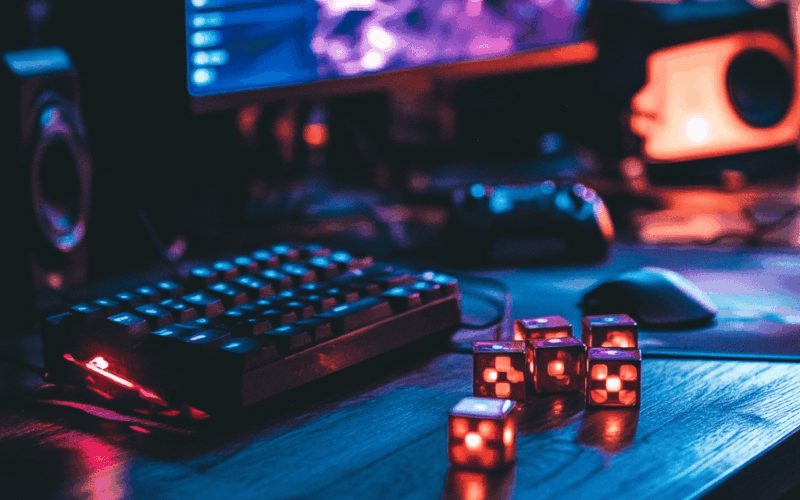Level design is not just a set of locations, decorations and enemies. It is a carefully constructed space that should be beautiful, logical and convenient for the player. Visual details create an atmosphere, immerse you in the game world, but when used excessively, they can be harmful – overload perception, confuse, distract from goals. In this article, we will figure out how to create a visually rich, but readable game environment in which every detail works for the gameplay.
Visual and Gameplay Readability: Why It Matters
Legibility is the player’s ability to quickly and intuitively understand where they are, what they need to do, and what’s happening on the screen. If the visuals interfere with these tasks, the level becomes “unplayable.”
The higher the visual readability, the easier it is for the player to:
- find a way forward;
- distinguish interactive elements from background ones;
- recognize threats and targets;
- navigate even in dynamic scenes.
It is important to remember: the player perceives the picture in a split second. If at this moment everything looks equally important, he gets lost.
Color and contrast: the key to directing the eye
Color is a powerful tool for controlling attention. With the help of contrast, you can highlight the main objects and “mute” the secondary ones.
Some techniques:
- Use bright colors for interactive elements.
- Contrasting light helps guide the player in the right direction.
- Cool and dark tones work well for the background, warm tones for the foreground.
It is also worth remembering about color zones: for example, red can be associated with danger, green – with safety or healing. Color logic speeds up the player’s reaction and makes the perception of the level more intuitive.
Shapes and silhouettes: legibility of objects in dynamics
When the player moves, his attention is dispersed. Therefore, each important object in the level should have a clear and recognizable silhouette.
What helps make objects readable:
- Simple geometry;
- Contour lighting;
- Contrast between background and object;
- Use of characteristic shapes (eg round first aid kit, sharp spikes).
If in a combat scene the player can’t tell an enemy from a rock, then the silhouettes aren’t working properly – and that’s a critical error.
A level is a route, not a gallery
The game level should guide the player like an invisible navigator. Even if it is visually rich, it is important that the player always understands where to go next.
Here’s how you can direct the player:
- Place landmarks – large, memorable objects in the background;
- Use “flows” – lines of light, paths, lined up columns;
- Use movement – smoke, running water, flying leaves.
Visual richness should work to the benefit of the route, not distract from it.
How not to overdo it with details
A common mistake is the desire to “liven up” the level with small details, filling every corner. But excessive detailing overloads perception and interferes with concentration.
How to control saturation:
- Use zones of visual emphasis and zones of “silence” (visual rest);
- Work according to the principle “the important – in detail, the background – in a simplified manner”;
- Do tests – let someone else complete a level, see where they get lost.
Testing: How to Know if Everything is Balanced
No level is perfect without testing. What seems logical to the developer may not be obvious to the player – especially when it comes to developing an indie game , where all decisions are made within a small team or even one person.
Useful types of testing:
- Blind play : the tester plays without hints, and you record where he gets lost;
- Darkening the level : reducing the color saturation helps to reveal the readability of shapes;
- Gray blocks : temporary simplification of the environment to check only the route.
After testing, it’s useful to ask yourself three questions: Does the player understand where to go? Can they see the dangers? Can they distinguish the necessary objects from the background?
Working with HUD and UI: Don’t Forget About the Interface
Even if the level itself is balanced and visually competent, everything can be ruined by a poorly built interface. HUD elements (head-up display – what is always in front of your eyes: health, map, tasks, etc.) are also part of the visual perception of the level. They cannot be considered separately – they must be in the same rhythm with the environment and not interfere with the gameplay.
How to maintain balance between visuals and interface:
- Minimalism is your best friend : use only those HUD elements that are really needed at the moment;
- Contrast, but not conflict : the interface should be readable, but not stand out from the overall color palette of the level;
- Interactivity on demand : maps, hints, quests – it is convenient when they appear at the player’s command, and do not hang around constantly;
- Adaptability : in tense moments (fight, chase), remove everything unnecessary from the screen – let only the most necessary remain.
Sometimes good interface solutions are even more important than decorations – especially if the game requires quick reactions and concentration. Visual balance is not only about the environment, but also about what is right in front of your eyes.
The balance between visuals and gameplay is always an art of compromise. The level should be beautiful, but not interfere with the player’s play. Details should immerse, but not distract. Strong design is not the one that screams, but the one that imperceptibly leads the player from the beginning to the end, making every minute of gameplay comfortable and memorable.
Questions and Answers
Excessive details make perception difficult and interfere with orientation in space.
Through contrast, landmarks, light, movement and visual flows.
Blind testing, simplifying the color palette, and observing players during the gameplay.

